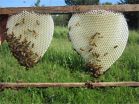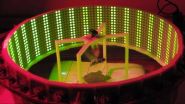(Press-News.org) Religion is a key factor in demography, important for projections of future population growth as well as for other social indicators. A new journal, Yearbook of International Religious Demography, is the first to bring a quantitative demographic focus to the study of religion. The journal is co-edited by IIASA researcher Vegard Skirbekk, an expert in the field of religious demography. The first edition of the journal includes three studies by IIASA researchers:
Vienna: Growing diversity in religion and ethnicity
The city of Vienna is growing increasingly diverse in both religion and ethnicity, according to a new study by IIASA and Austrian Academy of Sciences researcher Markus Speringer and Ramon Bauer of the Vienna Institute for Demography, which explored how Vienna’s ethnic and religious diversity has developed from 1970 to 2011, in a project of the Austrian Academy of Sciences (OeAW).
The study reflects Vienna's changing religious and ethnic structure, which has seen increased migration since 1970. By 2011, almost a third of Vienna's population was foreign-born, the study showed. But while in 2001, a majority of those immigrants came from Turkey and the former Yugoslavia, in 2011 the immigrant population was far more diverse, including many newcomers from Germany, Poland, Hungary, Romania, and Bulgaria.
At the same time, the percentage of Roman Catholics has declined in the city, from nearly 80% in 1971 to less than 50% in 2001. This decline is due to both an increase in religious disaffiliation as well as an influx of people of different religions, the study shows.
The study also assessed the makeup of Vienna's neighborhoods – showing that most migrants live in Vienna's inner districts, in diverse, mixed neighborhoods. The outer districts of Vienna, by contrast, are mainly home to people born in Austria with a catholic religious affiliation.
Europe: Immigration and religious switching
Christians still make up 75% of people in Europe, according to a second paper published in the journal, which quantified Europe's population by religious affiliation. The study, led by IIASA researcher Marcin Stonawski, showed that the next-largest group (18%) of Europeans claims no religious affiliation, and Muslims are the third-largest group with about 6% of the population. The study estimated religious distribution by age and sex for 42 countries – the first to provide such a detailed demographic analysis over all of Europe. It shows that the Christian population is relatively old, with a median age of 41.7 years, while the median age for the Muslim population was 31.8 years.
A global understanding: Methodology for religion and demography
A third paper published in the new journal provides the methodology behind the Pew Research Global Religious Landscape Study published in 2012, the most thorough demographic analysis to date of global religious populations. The study, based on more than 2,500 censuses, surveys and population registers, found that 84% of the 2010 world population was affiliated with a religion. The study also found that roughly one-in-six people around the globe had no religious affiliation.
The report included estimates of the religious composition of over 230 countries and territories and, for the first time ever, median age data for followers of each religion. The study documented a wide gulf between the median age of Muslims (23) and Jews (36).
The report was produced by the Pew Research Center in collaboration with researchers from the Age and Cohort Change Project (ACC) at the International Institute for Applied Systems Analysis (IIASA), including Vegard Skirbekk, Marcin Stonawski and Michaela Potancokova.
INFORMATION:
Contact
Vegard Skirbekk
World Population
+43(0) 2236 807 378
skirbekk@iiasa.ac.at
Marcin Stonawski
World Population
+43(0) 2236 807 303
stonaw@iiasa.ac.at
Markus Speringer
World Population
+43(0) 2236 807 487
speringe@iiasa.ac.at
markus.speringer@oeaw.ac.at
Katherine Leitzell
IIASA Press Office
Tel: +43 2236 807 316
Mob: +43 676 83 807 316
leitzell@iiasa.ac.at
About IIASA
IIASA is an international scientific institute that conducts research into the critical issues of global environmental, economic, technological, and social change that we face in the twenty-first century. Our findings provide valuable options to policy makers to shape the future of our changing world. IIASA is independent and funded by scientific institutions in Africa, the Americas, Asia, Oceania, and Europe. http://www.iiasa.ac.at
The changing landscape of religion
2014-08-20
ELSE PRESS RELEASES FROM THIS DATE:
Vanderbilt researchers find that coronary arteries hold heart-regenerating cells
2014-08-20
Endothelial cells residing in the coronary arteries can function as cardiac stem cells to produce new heart muscle tissue, Vanderbilt University investigators have discovered.
The findings, published recently in Cell Reports, offer insights into how the heart maintains itself and could lead to new strategies for repairing the heart when it fails after a heart attack.
The heart has long been considered to be an organ without regenerative potential, said Antonis Hatzopoulos, Ph.D., associate professor of Medicine and Cell and Developmental Biology.
"People thought ...
The power of salt
2014-08-20
Where the river meets the sea, there is the potential to harness a significant amount of renewable energy, according to a team of mechanical engineers at MIT.
The researchers evaluated an emerging method of power generation called pressure retarded osmosis (PRO), in which two streams of different salinity are mixed to produce energy. In principle, a PRO system would take in river water and seawater on either side of a semi-permeable membrane. Through osmosis, water from the less-salty stream would cross the membrane to a pre-pressurized saltier side, creating a flow ...
Repeat ED visits for acute heart failure suggest need for better outpatient care
2014-08-20
Almost one-third of acute heart failure syndrome patients seen in hospital emergency departments (EDs) in Florida and California during 2010 had ED visits during the following year, findings that suggest a lack of appropriate outpatient care. A study by Massachusetts General Hospital (MGH) investigators also finds that patients with frequent ED visits for the syndrome accounted for more than half of all such ED visits and hospitalizations, contributing to significant health care costs.
"The high proportion of patients with frequent ED visits reflects the failure of ...
CU Denver researcher shows economic disparities impact infant health
2014-08-20
DENVER (August 20, 2014) – Women who are poor experience higher cortisol levels in pregnancy and give birth to infants with elevated levels of the stress hormone, putting them at greater risk for serious disease later in life, according to a new research from the University of Colorado Denver.
The study, published online recently in the American Journal of Human Biology, is the first to measure cortisol in infants and relate it directly to the socioeconomic status of their mothers during pregnancy.
"There have been several studies relating cortisol levels in teenagers ...
New framework would facilitate use of new Android security modules
2014-08-20
Computer security researchers from North Carolina State University and Technische Universität Darmstadt/CASED in Germany have developed a modification to the core Android operating system that allows developers and users to plug in new security enhancements. The new Android Security Modules (ASM) framework aims to eliminate the bottleneck that prevents developers and users from taking advantage of new security tools.
"In the ongoing arms race between white hats and black hats, researchers and developers are constantly coming up with new security extensions," says Dr. ...
Worker bees 'know' when to invest in their reproductive future
2014-08-20
When a colony of honeybees grows to about 4,000 members, it triggers an important first stage in its reproductive cycle: the building of a special type of comb used for rearing male reproductive, called drones. A team of experts from the Department of Neurobiology and Behaviour at Cornell University, led by Michael Smith, studied what starts the reproductive cycle of honeybee colonies. The results are published in Springer's journal Naturwissenschaften - The Science of Nature.
Reproduction isn't always a honeybee colony's top priority. Early in a colony's development, ...
Research paves way for development of cyborg moth 'biobots'
2014-08-20
North Carolina State University researchers have developed methods for electronically manipulating the flight muscles of moths and for monitoring the electrical signals moths use to control those muscles. The work opens the door to the development of remotely-controlled moths, or "biobots," for use in emergency response.
"In the big picture, we want to know whether we can control the movement of moths for use in applications such as search and rescue operations," says Dr. Alper Bozkurt, an assistant professor of electrical and computer engineering at NC State and co-author ...
Abusive leadership infects entire team
2014-08-20
EAST LANSING, Mich. --- Supervisors who are abusive to individual employees can actually throw the entire work team into conflict, hurting productivity, finds new research led by a Michigan State University business scholar.
The study, conducted in China and the United States, suggests the toxic effect of nonphysical abuse by a supervisor is much broader than believed. Published online in the Journal of Applied Psychology, it's one of the first studies to examine the effect of bad bosses in employee teams. Teams are increasingly popular in the business world.
Lead ...
Scientists show type-1 and type-2 diabetes are caused by same underlying mechanism
2014-08-20
Work by scientists at the Universities of Manchester and Auckland suggest that both major forms of diabetes are the result of the same mechanism.
The findings, published today in the FASEB Journal (20 August), provide compelling evidence that juvenile-onset or type-1 diabetes and type-2 diabetes are both caused by the formation of toxic clumps of a hormone called amylin.
The results, based on 20 years' work in New Zealand, suggest that type-1 and type-2 diabetes could both be slowed down and potentially reversed by medicines that stop amylin forming these toxic clumps. ...
A semi-artificial leaf faster than 'natural' photosynthesis
2014-08-20
In leaves, photosystem 1 (PS1) absorbs light and its energy is finally utilized for the conversion of carbon dioxide to biomass. Photovoltaic devices, mostly build from silicon based semiconductors, also harness solar light but produce electricity. One approach for the development of cheaper and renewable photovoltaics consists in replacing the semi-conductor with the isolated membrane protein complexes of photosynthesis. Prof. Dr. Matthias Rögner's team isolates a highly stable PS1 from thermophilic cyanobacteria that live in a hot spring in Japan. However, the integration ...



